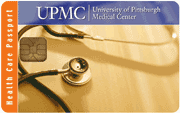13 July, 2015
category: Digital ID, Health, Smart Cards
But getting both of these programs up and running is still ongoing. France launched its program in 1998 and had slow acceptance from health care providers as they lacked the IT equipment to accept the cards. Fourteen years after the implementation of the system, still some providers in France are yet to use the cards.
Issuing the original cards was done in about three years, but updating the French cards with photos has been a challenge. They started issuing new cards in 2007, but more than one-third of cardholders still use the cards issued 15-years ago.
Germany’s program started in 1995 issuing memory-only chip cards but upgraded to microprocessor cards in 2011. By the end of 2013, almost all of the population insured through the health insurance system had been issued the new cards, and providers were equipped with the readers that could access information.
But there were delays. German officials told the GAO that the full transition to the new cards would not be complete until early 2015. Full implementation of the new smart card, with all of the applications, will not be completed until 2018 – more than 10 years later than mandated.
There would also be a cost to moving to a Medicare smart card. Officials in both France and Germany told us that they experienced significant costs related to managing the system beyond initial implementation costs.
French officials explained that it costs about $37 million annually to maintain the infrastructure for the beneficiary card and nearly $31 million per year in IT and human resources costs for the provider card. In addition, there are annual costs to produce, issue and deactivate cards. In France, for instance, the cost to produce and issue beneficiary cards is approximately $2.50 per card. Production and issuance costs for provider cards ranging from $8 to $12 per card.
In Germany, officials say that they are paying about $2.40 per beneficiary annually for the development of the infrastructure. In 2014, there were approximately 70 million beneficiaries using the German cards, which equates to about $168 million in development costs per year.
Ultimately, consideration to increase the functionality of the Medicare beneficiary card will rest on the applications for the card. The GAO concluded that electronically-readable cards would have a limited effect on program integrity but could aid administrative processes.
Unless CMS changes its policy and requires cards for providers and patients for payments, it’s likely true that a smart card would be hampered in its ability to reduce fraud. If the policy changes, there would be a great opportunity to reduce fraud.
“Ultimately, a decision about whether to implement an electronically-readable card will rest upon a determination regarding the costs and benefits compared to the current paper card or other strategies and solutions,” the report concluded.




